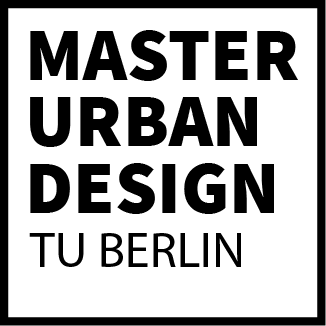
Urban Design Studio
Spatial Commons 15 – Berlin Where Do We Stand? WS 2022/2023
Tutors: Anna Heilgemeir, Julia Köpper and Jörg Stollman
Chair of Urban Design and Urbanisation, Chair of Urban Design and Urbanisation
Students:
Maximilian Theye, Sophie Dilg, Melanie Marshall, Erum Chauhan, Nick Fimpel, Inci Sagirbas
The project „Campus for Arrival“ was developed in the winter semester 2022/23 as part of the master design studio „Spatial Commons 15 – Berlin where do we stand“?‘ at the CUD – Chair for Urban Design and Urbanization at the Technische Universität Berlin under the direction of Anna Heilgemeir, Julia Köpper and Jörg Stollmann. The project has an integrated focus on the topic „Common Good in Current Urban Development“ and was embedded in a larger cooperation between academia, administration, and the economy. Three current Berlin urban development projects, one on the outskirts of Berlin „Neues Zentrum Neu-Hohenschön- hausen“, one on the Berlin Ring „Böttgerblock“ and one in Berlin‘s geographic center „Franz-Künstler-Straße“, with different planning statuses were analyzed critically and interventions were designed. These designs are not so much competing, final solutions for the respective location, but rather spatial declinations of Creating an arrival infrastructure that goes beyond affordable housing. the main theme. They draw attention to urgent social issues that are often neglected in urban development planning for reasons of time and profit. Furthermore, they illustrate different spatial arrangements, user structures, and ownership models that integrate a com- mon good-oriented sustainable development. In this way, they contribute to the public discourse on future urban developments and highlight both planning and political responsibility.
The project „Campus for Arrival“ presented here defines housing as a key element in relation to Franz- Künstler-Strasse, a site owned by a state-owned construction company in the district of Friedrichshain- Kreuzberg. In particular, there is a focus on addressing increasing migration movements, affordable housing for refugees and economically weak people, possibilities of informal appropriation, threshold spaces as meeting places and structures of public services, as well as different ownership models that allow experimental forms of housing and living outside normative notions of family.
Rethinking social housing towards a holistic structure that addresses societal challenges and socio-economic inequalities. Adaptable, experimental, community-oriented and affordable housing is thebackbone of the ideal arrival infrastructure for newcomers. Co-habitation and economic activity as well as participation andsocial services activate the living and working neighbourhood with recreational value.

Coming from a thorough analysis of the site, we formulated our mission statement which guided our design process. Given both the existing built fabric of the Tempohomes on our site and the strategy of the District of Friedrichshain-Kreuzberg to provide ample space for refugees in several spatially and functionally integrated, decentralised locations within its boundaries, we want to answer the question how social housing and community infrastructure can adapt to migration flows. Deeply connected to this is the matter of representation: Are different social realities considered in the development process of this chunk of the city? (And more general, which improvements are needed here?) With our design, we try to answer this question by rethinking social housing. Adaptability, experimentality, affordability and a community focus become founding pillars of our tailored aproach that incorporates the much needed arrival infrastructure.
Key themes explored include:
> How can as much affordable housing as possible be
anchored in developments?
anchored in developments?

> How can different types of housing be integrated into
building projects? And for whom?

> Would it be beneficial to inscribe different carriers in
planning specifications and where?

> How to include housing for refugees (in different
phases) as part of the project?


> In what way do life cycle costs and environmental and
social sustainability become integrative factors in project
development?





